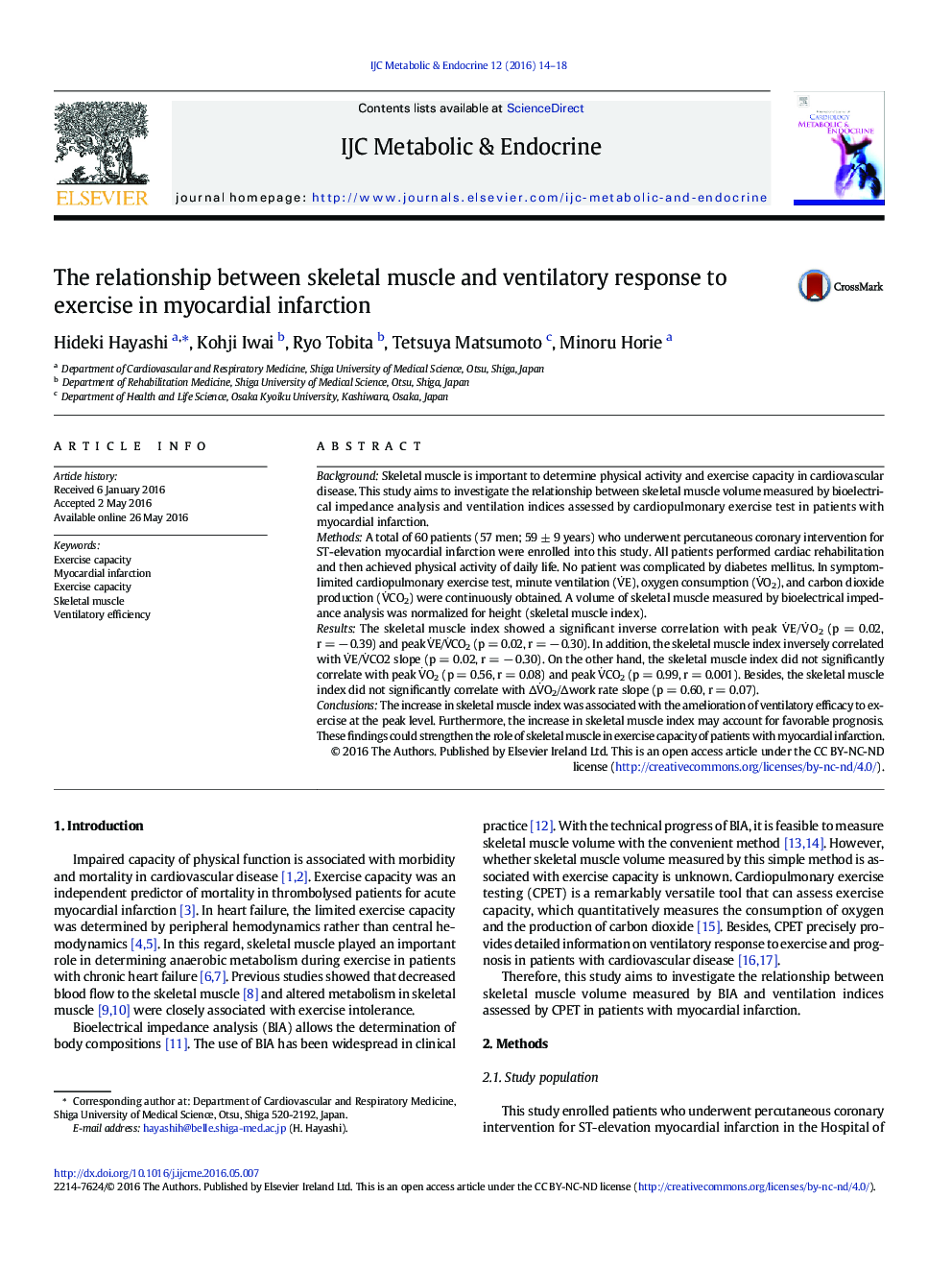| Article ID | Journal | Published Year | Pages | File Type |
|---|---|---|---|---|
| 2927174 | IJC Metabolic & Endocrine | 2016 | 5 Pages |
BackgroundSkeletal muscle is important to determine physical activity and exercise capacity in cardiovascular disease. This study aims to investigate the relationship between skeletal muscle volume measured by bioelectrical impedance analysis and ventilation indices assessed by cardiopulmonary exercise test in patients with myocardial infarction.MethodsA total of 60 patients (57 men; 59 ± 9 years) who underwent percutaneous coronary intervention for ST-elevation myocardial infarction were enrolled into this study. All patients performed cardiac rehabilitation and then achieved physical activity of daily life. No patient was complicated by diabetes mellitus. In symptom-limited cardiopulmonary exercise test, minute ventilation (V̇E), oxygen consumption (V̇O2), and carbon dioxide production (V̇CO2) were continuously obtained. A volume of skeletal muscle measured by bioelectrical impedance analysis was normalized for height (skeletal muscle index).ResultsThe skeletal muscle index showed a significant inverse correlation with peak V̇E/V̇O2 (p = 0.02, r = − 0.39) and peak V̇E/V̇CO2 (p = 0.02, r = − 0.30). In addition, the skeletal muscle index inversely correlated with V̇E/V̇CO2 slope (p = 0.02, r = − 0.30). On the other hand, the skeletal muscle index did not significantly correlate with peak V̇O2 (p = 0.56, r = 0.08) and peak V̇CO2 (p = 0.99, r = 0.001). Besides, the skeletal muscle index did not significantly correlate with ΔV̇O2/Δwork rate slope (p = 0.60, r = 0.07).ConclusionsThe increase in skeletal muscle index was associated with the amelioration of ventilatory efficacy to exercise at the peak level. Furthermore, the increase in skeletal muscle index may account for favorable prognosis. These findings could strengthen the role of skeletal muscle in exercise capacity of patients with myocardial infarction.
